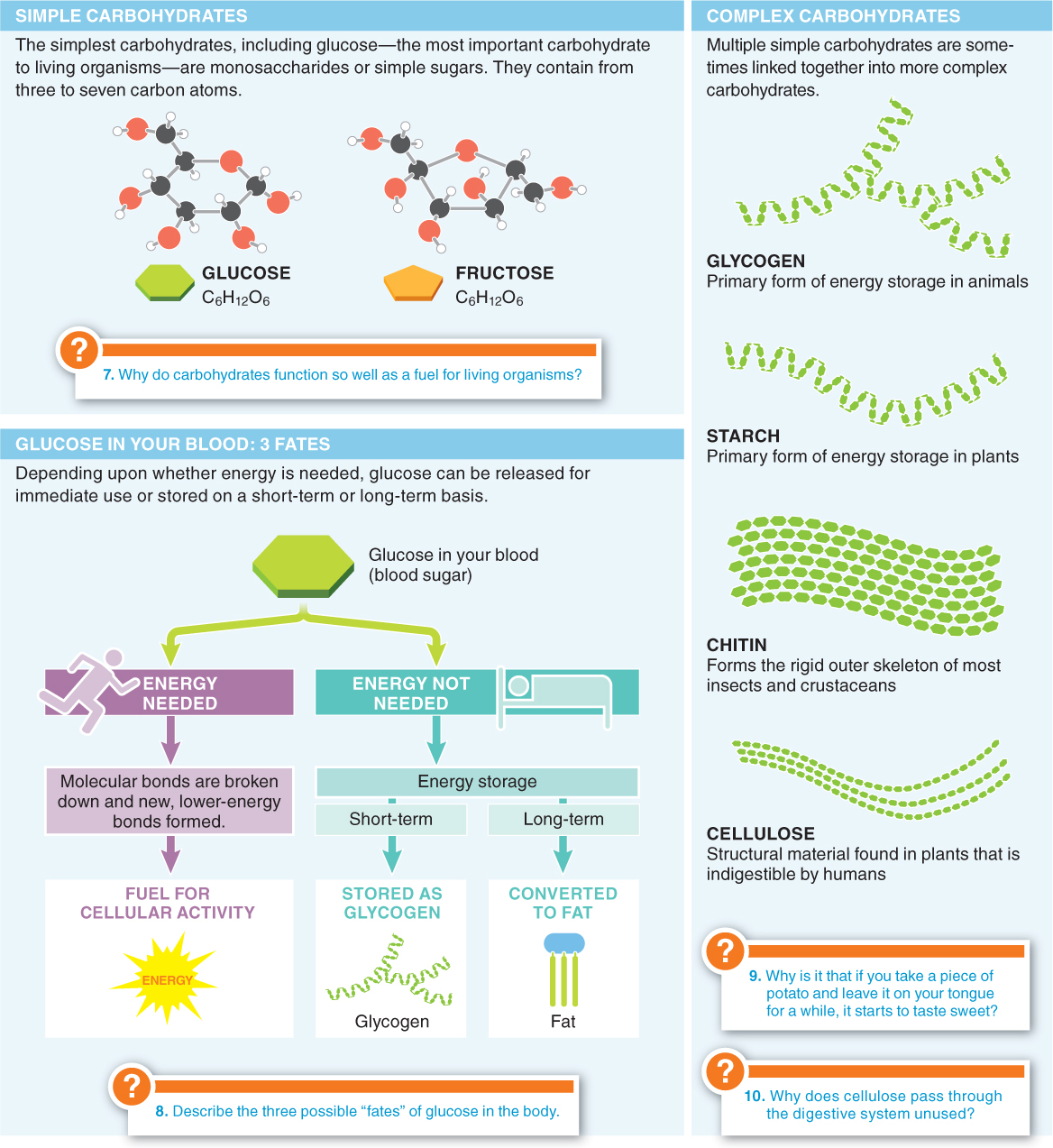2.8–2.11
2.8–Carbohydrates are fuel for living machines.
Carbohydrates, made up of carbon, oxygen, and hydrogen, are the primary fuel for running all cellular machinery and also form much of the structure of cells.

Q
Water can absorb and store a large amount of heat while increasing only a few degrees in temperature. Why?
- a) The heat must first be used to break the hydrogen bonds rather than raise the temperature.
- b) The heat must first be used to break the ionic bonds rather than raise the temperature.
- c) The heat must first be used to break the covalent bonds rather than raise the temperature.
- d) An increase in temperature causes an increase in adhesion of the water.
- e) An increase in temperature causes an increase in cohesion of the water.

A chemical compound that releases H+ into a solution is called:
- a) a proton.
- b) a base.
- c) an acid.
- d) a hydroxide ion.
- e) a hydrogen ion.

Which of the following foods is not a significant source of complex carbohydrates?
- a) fresh fruit
- b) rice
- c) pasta
- d) oatmeal
- e) All of the above are significant sources of complex carbohydrates.

Sucrose (table sugar) and lactose (the sugar found in milk) are examples of:
- a) naturally occurring enzymes.
- b) simple sugars.
- c) monosaccharides.
- d) disaccharides.
- e) complex carbohydrates.

Which of the following statements about starch is incorrect?
- a) Starch is the primary form of energy storage in plants.
- b) Starch consists of a hundred or more glucose molecules joined together in a line.
- c) Starch tastes sweet because it is made from glucose.
- d) Starch is a polysaccharide.
- e) All of the above statements about starch are correct.

82